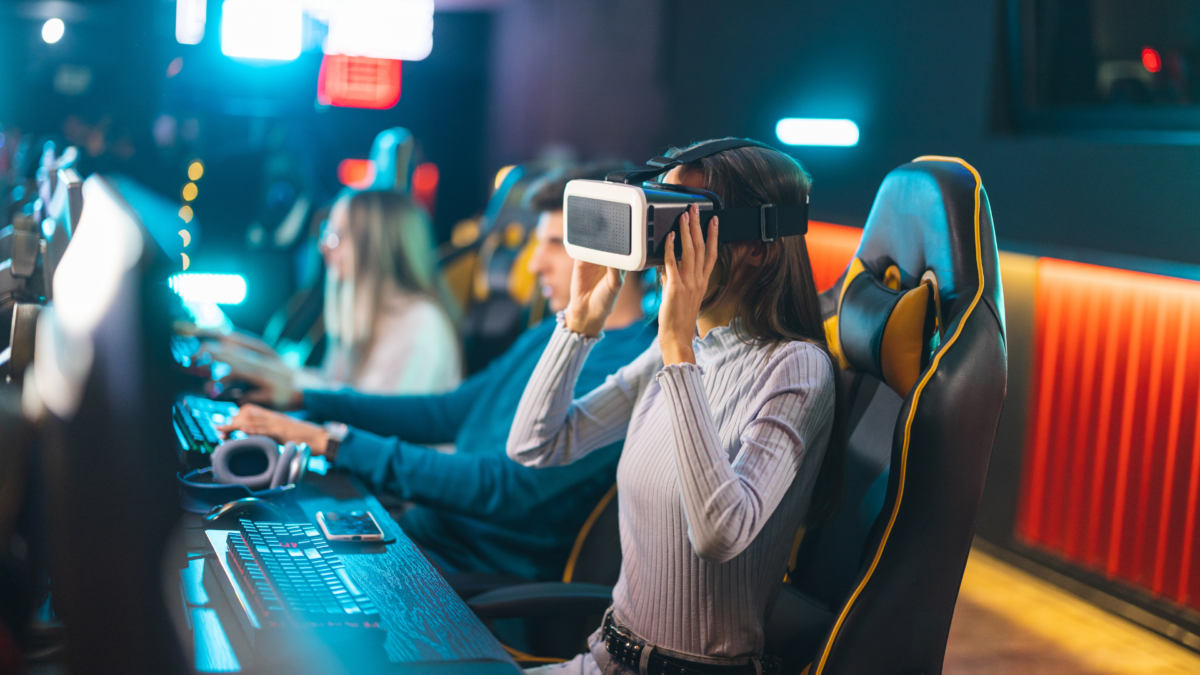VR is one of the most talked about and popular technologies in the world today. With so much hype surrounding it, it’s no wonder that many people are curious about what all the fuss is about. In this blog post, we’ll explore what VR is, how it works, and what its potential applications are. So whether you’re a tech enthusiast or just curious about this new phenomenon, read on!
What Is Virtual Reality?
Virtual Reality is a technology that immerses the user in a simulated environment. This environment can be anything from a simple three-dimensional scene to an entire world. VR headsets provide the user with binocular vision and headphones, which allow them to experience the virtual environment as if it were real.
There are many different applications for Virtual Reality. One of the most common uses is gaming. Games that use VR allow the player to feel like they are in the game world, rather than on a screen. This allows the player to feel more involved in the game and makes them more likely to spend time playing it. Another application is medical training. Doctors can use VR to help train their patients how to react in dangerous situations. By having patients experience these situations first-hand, doctors can better understand how they will behave under pressure.
There are also potential uses for VR in advertising and marketing. By creating realistic environments, businesses can create ads that are more likely to be effective. Additionally, by making users feel like they are actually inside an ad, they are more likely to remember it and act on it.
Outstanding Benefits of VR
There are many reasons why virtual reality is so important. For one thing, it can help people learn new things in a more realistic way than usual. It can also help people recover from injuries or diseases by using simulations of different environments. Finally, it can be used to train soldiers and pilots in dangerous situations.
Advantages of Virtual Reality
Virtual reality is a technology that immerses the user in a simulated environment. It allows users to experience events and situations that are not possible in the real world. Virtual reality has many potential benefits for users, including:
Immersion
Users feel as if they are actually in the virtual reality environment. This can help reduce anxiety and stress levels.
Learning and Training
Virtual reality can be used to learn new things or train for specific tasks, such as surgery or driving simulations.
Entertainment
VR can be used to create realistic and immersive experiences that can be enjoyed by people of all ages.
Social interaction
VR can help people interact with each other more effectively and socialize in ways that are not possible in the real world.
Disadvantages of Virtual Reality
Virtual Reality is a technology that immerses the user in a simulated environment. While it has many advantages, there are also some disadvantages.
One disadvantage of virtual reality is that it can be addictive. When users are immersed in VR, they may find it difficult to switch back to reality. This can lead to negative consequences, such as neglecting real-world tasks or socializing. Another disadvantage is that it can be isolating. Because users are constantly immersed in the VR world, they may not feel connected to the real one. This could affect individuals and groups, as people may become less engaged with their surroundings and more prone to social isolation.
Future of VR
The potential applications of VR are endless. Some of the most popular uses include gaming, education, healthcare, and entertainment. In gaming, VR has the potential to create highly immersive experiences that let players explore worlds that wouldn’t be possible on traditional platforms. For example, one company is working on a VR game that lets you fly around space as a starfighter pilot.
VR also has tremendous potential in educational settings. For example, schools can use VR to teach geography or science concepts in a way that’s more engaging and interactive than traditional classroom instruction. Healthcare providers are also exploring ways to use VR to treat medical conditions. For example, one hospital is using VR to help patients deal with PTSD after a traumatic experience.
Many other possible applications for VR haven’t been fully explored yet. The possibilities are endless and VR remains at the forefront of innovation for its limitless potential in future technologies.

